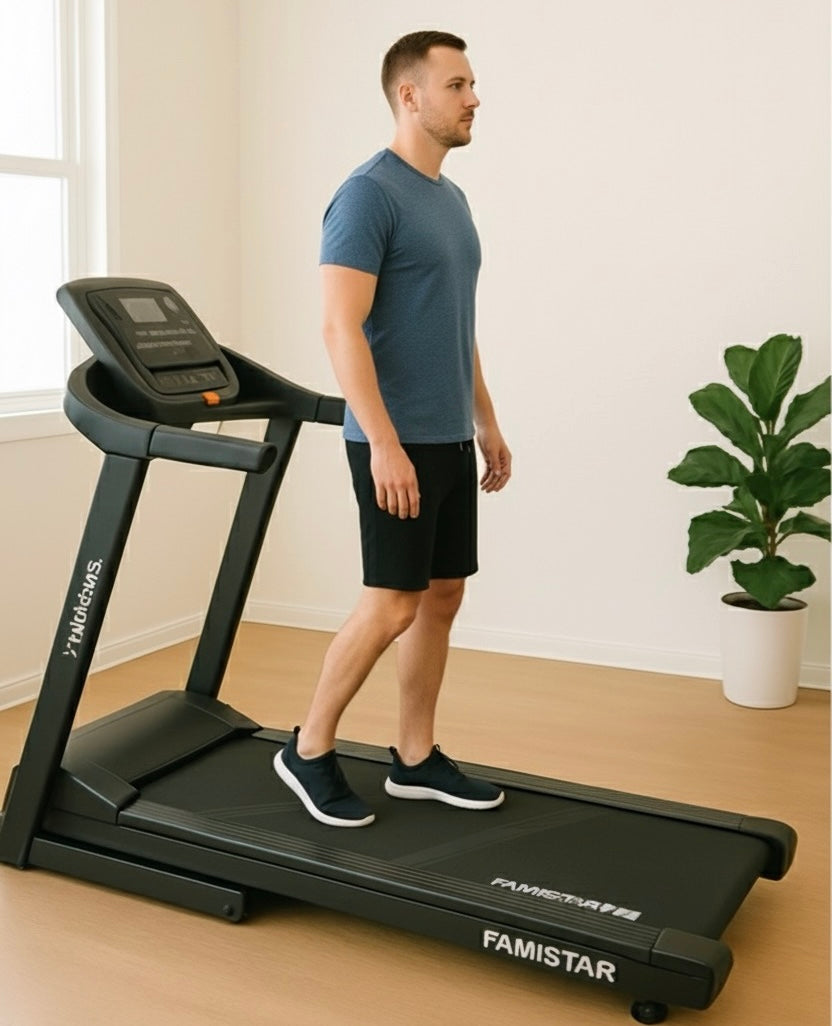
Walking Backwards on Treadmill: What Happens When You Reverse Your Steps
Share
A practical guide for treadmill users who want to improve calorie burn, strengthen muscles, and protect joints with treadmills.
Walking backwards on a treadmill—sometimes called retro walking—is more than a quirky gym trick. It challenges muscles differently, improves balance, and can increase calorie burn by up to 40% compared with forward walking, as reported in clinical studies on energy expenditure. Experts at Harvard Health also note that walking variations like backward walking can help improve cardiovascular health and overall mobility.
Key Benefits of Walking Backwards on a Treadmill
1. Burn More Calories
Backward walking recruits additional muscle groups, requiring more energy and helping with fat loss. According to clinical research and American Council on Exercise guidance, energy expenditure is significantly higher than forward walking at the same speed.

2. Reduce Joint Stress and Pain
This technique shifts load patterns on knees and hips, which can reduce discomfort for people with joint issues. Rehabilitation studies, including stroke rehab trials, show improvements in walking ability and reduced joint strain. Mayo Clinic experts also emphasize that safe walking modifications are helpful for joint recovery and mobility.
3. Improve Balance and Coordination
Deliberate, toe-to-heel steps engage stabilizing muscles and the core. Research on lumbar muscle activation supports better posture, coordination, and balance. This is particularly important for older adults, as highlighted by CDC fall-prevention guidelines.
4. Strengthen Muscles and Flexibility
Backward walking activates quads, glutes, hip flexors, and lower-back muscles, promoting stability and flexibility and reducing lumbar tension, as highlighted by Cleveland Clinic research.
Safety Tips for Walking Backwards on a Treadmill
- Start at very low speed (under 2 mph) on a flat incline.
- Hold handrails or use a safety clip until confident.
- Keep your chest upright, core engaged, and take small steps.
- Increase duration or incline gradually.
- Stop if you experience sharp pain or dizziness.
Sample Weekly Backward Walking Routines
FAMISTAR treadmills provide stability and safety features to help users perform backward walking safely and confidently:
| Level | Time | Speed / Incline | Focus |
|---|---|---|---|
| Beginner | 5–10 min | Very low speed, flat | Balance & familiarization |
| Intermediate | 10–15 min | 1–2 mph, 0–2% incline | Calorie burn & strength |
| Advanced | 15–20 min | 2–3 mph, 1–4% incline or intervals | Endurance & mobility |
Who Should Try Walking Backwards on a Treadmill
- Runners recovering from overuse injuries.
- Fitness enthusiasts seeking extra calorie burn and balanced workouts.
- Those aiming to strengthen lower-body stabilizers and improve posture.
People with recent surgery, unstable joints, or severe balance issues should consult a clinician before attempting backward treadmill walking.
Frequently Asked Questions
How often should I walk backwards on a treadmill?
Begin with 1–2 short sessions per week and gradually increase as strength and balance improve.
Does it reduce knee or back pain?
Many users report reduced stress on knees and improved lower-back posture. Always consult a healthcare provider for specific conditions.
Is it more effective than forward walking for calorie burn?
Backward walking increases energy expenditure and complements forward walking, making it an efficient addition to treadmill routines.
What speed is recommended for beginners?
Start very slowly (under 2 mph) on a flat incline and increase only when stable and pain-free.
Conclusion
Walking backwards on a treadmill is a safe, effective way to increase calorie burn, protect joints, and strengthen muscles. Using a FAMISTAR treadmill—with stable handrails and safety features—makes it easier and more comfortable to learn. Combine backward walking with forward walking and mobility exercises for the best results.

